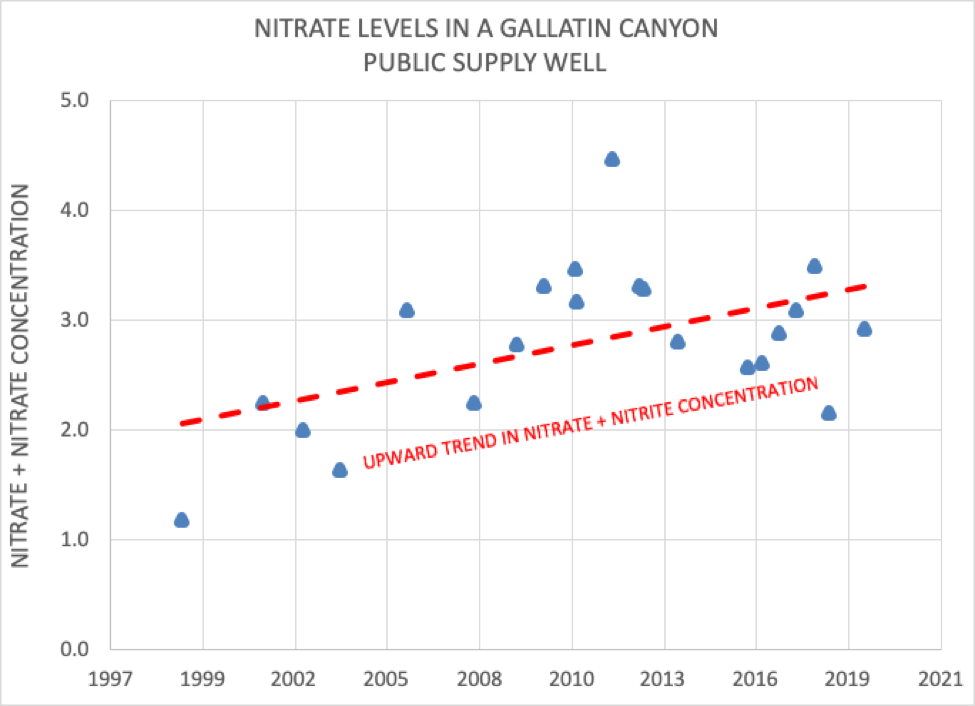Groundwater study to impact water management.
BY Kristin Gardner, Executive Director
Groundwater quality and quantity is threatened by the proliferation of septic systems and individual wells in the Upper Gallatin Canyon. This could lead to the degradation of drinking water supplies and the health of the Gallatin River. To better understand these impacts, the Montana Bureau of Mines and Geology is conducting an extensive study over the next three years.
“This study will answer many important questions about the underlying aquifer including recharge sources, nutrient loads and connection to the Gallatin River,” said Mike Richter, a long-time Big Sky resident and research specialist for the MBMG. “The shallow aquifer is of most concern because it is utilized by residences, businesses and our local school system.”
MBMG Groundwater Investigation Program, which is funded through the Montana legislature, will oversee the Upper Gallatin Canyon study. This program supports science-based water management in Montana and “is important for the state because it provides stakeholders with answers to locally identified, site specific questions,” said Ginette Adbo, the manager for the GWIP program.
To qualify for a GWIP study, a project must be nominated by a local entity. The Gallatin River Task Force in partnership with the Gallatin Local Water Quality District submitted a nomination for the Upper Gallatin Canyon project in spring 2018. The need was identified as a priority action item outlined in the Big Sky Sustainable Watershed Stewardship Plan, produced in 2018 through a collaborative local planning effort.
The Upper Gallatin project was one of three GWIP projects selected across the state to start in 2019.
Assessing groundwater flow and transport of contaminants is complex and there is a certain mysteriousness because you cannot see what is below the surface. Groundwater flow is slower than river flow but this movement ultimately affects how and where land uses impact the river.
The study will also assess when and where groundwater interacts with the Gallatin River.
This interaction may vary in location and across seasons. In some situations or locations, the river may gain water and pollutants from the groundwater system, while in other situations, the river may recharge groundwater and cause changes in groundwater quality.
To get at these questions, MBMG anticipates measuring groundwater levels and water quality in 35-40 wells and will test surface water quality and flow at 11 locations across the study area.
“We also anticipate drilling some wells in the area next summer, if necessary, to determine the thickness of the alluvial aquifer, the nature of the underlying bedrock and water chemistry,” said James Rose, associate hydrogeologist for MBMG.
“The knowledge gained will be integral to fully understand Big Sky’s water resources and make wise, informed decisions regarding land, water and wastewater management in the Upper Gallatin Canyon,” Richter said.
This article originally appeared in the December 6-20 edition of Explore Big Sky.

